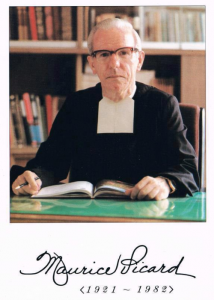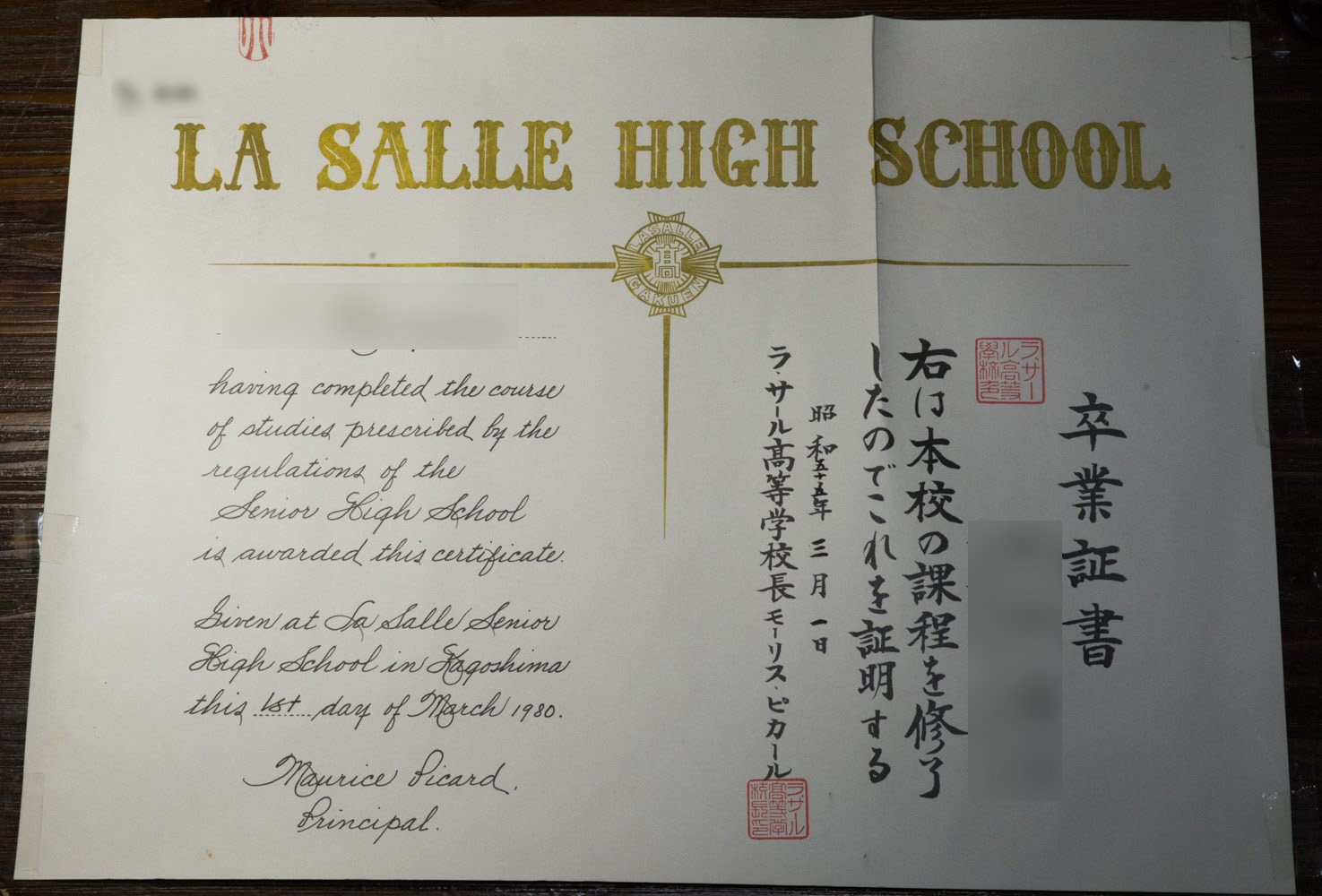 ウディ・アレンの「ラジオ・デイズ」を観ました。ゴールデンウィークに日本ラジオ博物館に行ってから、すっかりラジオ少年の血がよみがえり、その一環で観たものです。まだテレビが無くて、ラジオが日常の娯楽のほとんどすべてだった1938年から1944年ぐらいまでの、ウディ・アレンの少年時代を描いた作品です。冒頭でいきなり、ある家に押し入った強盗二人組の所に、ラジオの曲当てクイズの番組から電話がかかってきて、思わず出てしまい、3曲見事に当てて、その2人は50ドルくらいの物を盗んだだけなのに、次の朝それをはるかに上回る賞品がその家に送られてくる、というのでまず笑わせてくれます。ラジオがいいのは、テレビだと皆画面を見入ってしまって、お互いの会話とかほとんどありませんけど、ラジオだと皆自由に聞いて会話も成立する、という所です。ミア・ファローの演じる歌手志望の女性がチャンスをつかんでいくエピソードで、たまたまある店で殺人の現場を目撃して、目撃者として殺されそうになったのに、その殺し屋が実は同じ町の出身と分かってすっかり仲良くなり、その殺し屋のコネでチェーホフのラジオドラマの役をもらいます。その本番中に、突然ニュースのアナウンサーがスタジオに乱入してきて、「日本軍がパールハーバーを攻撃しました。」というニュースを読む、という演出がいいです。そこから戦争になりますが、灯火管制とかもありますが、日本とは豊かさがまったく比べものにならなかった、というのがこれを観るとよく分かります。その他、例の「火星人が襲撃してきた」というラジオドラマが本当だと受け取られてパニックになるという話と、主人公の叔母さんでオールドミスで常に結婚相手を探しているビーが、相手にほったらかされてしまう、というエピソードとからめていて、上手い演出です。全体に肩が凝らない楽しめる作品でした。
ウディ・アレンの「ラジオ・デイズ」を観ました。ゴールデンウィークに日本ラジオ博物館に行ってから、すっかりラジオ少年の血がよみがえり、その一環で観たものです。まだテレビが無くて、ラジオが日常の娯楽のほとんどすべてだった1938年から1944年ぐらいまでの、ウディ・アレンの少年時代を描いた作品です。冒頭でいきなり、ある家に押し入った強盗二人組の所に、ラジオの曲当てクイズの番組から電話がかかってきて、思わず出てしまい、3曲見事に当てて、その2人は50ドルくらいの物を盗んだだけなのに、次の朝それをはるかに上回る賞品がその家に送られてくる、というのでまず笑わせてくれます。ラジオがいいのは、テレビだと皆画面を見入ってしまって、お互いの会話とかほとんどありませんけど、ラジオだと皆自由に聞いて会話も成立する、という所です。ミア・ファローの演じる歌手志望の女性がチャンスをつかんでいくエピソードで、たまたまある店で殺人の現場を目撃して、目撃者として殺されそうになったのに、その殺し屋が実は同じ町の出身と分かってすっかり仲良くなり、その殺し屋のコネでチェーホフのラジオドラマの役をもらいます。その本番中に、突然ニュースのアナウンサーがスタジオに乱入してきて、「日本軍がパールハーバーを攻撃しました。」というニュースを読む、という演出がいいです。そこから戦争になりますが、灯火管制とかもありますが、日本とは豊かさがまったく比べものにならなかった、というのがこれを観るとよく分かります。その他、例の「火星人が襲撃してきた」というラジオドラマが本当だと受け取られてパニックになるという話と、主人公の叔母さんでオールドミスで常に結婚相手を探しているビーが、相手にほったらかされてしまう、というエピソードとからめていて、上手い演出です。全体に肩が凝らない楽しめる作品でした。
投稿者: kanrisha
フェザー プロフェッショナル アーティストクラブSS レザー ブラック
 これは、「フェザー プロフェッショナル アーティストクラブSS レザー ブラック + プロガード PG-15 15枚入り セット」です。いわゆる現在の理髪店で使われている、通称Shavette(これは元々Dovoの商標みたいです)と呼ばれる替刃式のストレートレザーです。海外のサイトでお勧めのストレートレザーのリストを見ると、必ずこれが上位に入っているので興味が湧いて買ってみました。ちなみに刃にはいわゆる「すべらなーい」の横滑り防止がついています。なので刃を爪に当てても当たりません。
これは、「フェザー プロフェッショナル アーティストクラブSS レザー ブラック + プロガード PG-15 15枚入り セット」です。いわゆる現在の理髪店で使われている、通称Shavette(これは元々Dovoの商標みたいです)と呼ばれる替刃式のストレートレザーです。海外のサイトでお勧めのストレートレザーのリストを見ると、必ずこれが上位に入っているので興味が湧いて買ってみました。ちなみに刃にはいわゆる「すべらなーい」の横滑り防止がついています。なので刃を爪に当てても当たりません。
実際に使ってみた感想ですが、基本的には良く剃れて問題はないです。両刃の安全剃刀よりも良く剃れます。ただ、普通のストレートレザーは肌に対して30°くらいの角度で剃りますが、このレザーは刃が固定部から少し顔を出している構造なので、もう少し立てないと刃がうまく肌に当たらない感じです。35~40°ぐらいの感じでしょうか。また、フルハローのストレートレザーでは、剃る時の音が気持ちいいですが、このレザーはしっかり固定されているので音は出ず、その点では楽しくはなく、ベタ刃のストレートレザーの剃り味に似ています。それから、下唇の下の顎部を剃るのは、皮膚をうまく引っ張って剃らないとストレートレザーでは肌を切りやすい箇所ですが、このレザーではあんまり気にしないで剃って肌を切ることもなく綺麗に剃れました。ただ、鼻と上唇の間の部分は、このレザーでも難所であり、一応綺麗には剃れましたが、深剃りしたらちょっと血が滲んでしまいました。この点はストレートレザーと大きな差はありません。後は使い捨てなので、コストの問題さえ無ければ(このプロガードの刃は1枚70~80円ぐらいです。理髪店では衛生管理の理由で使い捨てでしょうが、同じ人が使う分には普通の安全剃刀と同じで最低でも5~6回は使えると思います。)、革砥で磨いたりクリーニングしたりする手間がないのは優れていますが、個人で使っている分にはその辺もまあ楽しみの一つなので、大きなメリットではありません。トータルの感想としては、さすがにプロが使う道具だけあって、出来としては優等生的だと思います。ただ、問題点は刃を挿入するのは比較的簡単ですが、取り出すのがどうやればいいのかちょっと分からず、結局ラジオペンチではさんで引っ張り出しました。
E.M.フォースターの”Aspects of the Novel”(小説の諸相)
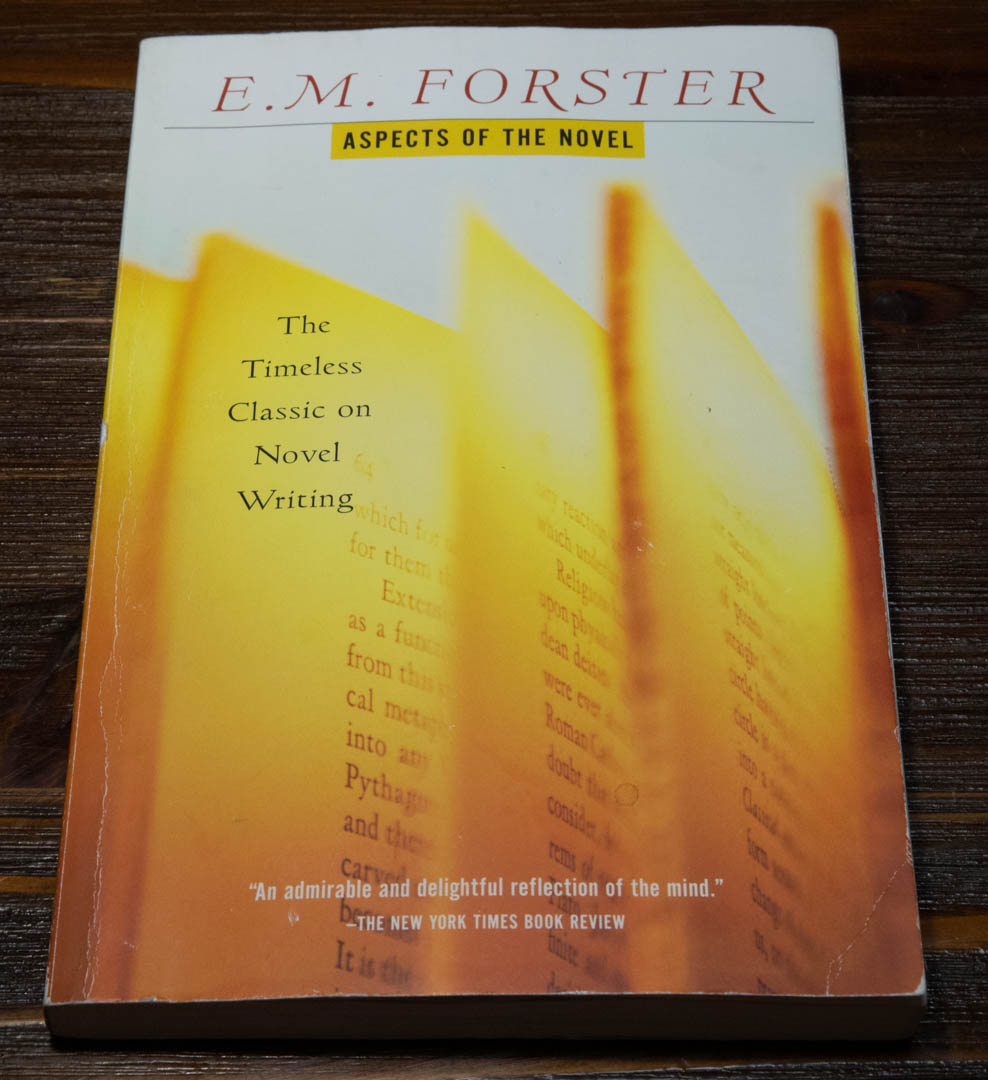 E.M.フォースターの”Aspects of the Novel”(小説の諸相)を読了。1927年に発表されたもので、フォースター流の「小説の読み方」「小説ガイド」的なものです。元は何かの教養講座みたいなものではないかと思います。最初邦訳を探したのですが、見つからず、原語で読みました。普段TimeやNewsWeekといった雑誌を読んでいてもほとんど出てこないような単語が沢山出てきて、語彙のいいお勉強になりました。この本を知ったきっかけは、小林信彦が評論家に何かの氏の小説について「登場人物が類型的過ぎる」といった批判を受け、それに対する反論として「それはフラットキャラクターである。知らないのであればフォースターの『小説の諸相』を読め。」と反論していたことです。
E.M.フォースターの”Aspects of the Novel”(小説の諸相)を読了。1927年に発表されたもので、フォースター流の「小説の読み方」「小説ガイド」的なものです。元は何かの教養講座みたいなものではないかと思います。最初邦訳を探したのですが、見つからず、原語で読みました。普段TimeやNewsWeekといった雑誌を読んでいてもほとんど出てこないような単語が沢山出てきて、語彙のいいお勉強になりました。この本を知ったきっかけは、小林信彦が評論家に何かの氏の小説について「登場人物が類型的過ぎる」といった批判を受け、それに対する反論として「それはフラットキャラクターである。知らないのであればフォースターの『小説の諸相』を読め。」と反論していたことです。
全体の構成は、
1.序論 2.ストーリー 3.登場人物 4.登場人物(続き) 5.プロット 6.ファンタジー 7.予言 8.パターンとリズム 9.結論
という風になっています。「フラットキャラクター」「ラウンドキャラクター」は4.の「登場人物(続き)」で出てきて、まあこの本の白眉と言っていいと思います。
フラットキャラクター(平面的なキャラクター)とは、フォースターによれば、類型的に描写されていて、しばしばカリカチュア的に描かれ、常にといっていいほど同じように行動し、同じようにしゃべる、というキャラクターです。これに対し、ラウンドキャラクター(立体的なキャラクター)とは、性格がある程度複雑で、ストーリーの進行に従って変化していき(多くは成長していき)、そのストーリーの中心を成すような人物(つまりは主人公)のことを言います。
ディケンズの「デイヴィッド・カッパーフィールド」の例で言うと、主人公のカッパーフィールドは、これはディケンズ自身の投影ですから当然ラウンドキャラクターで、また最後に主人公と結婚するアグニス・ウィックフィールドも多分ラウンドキャラクターと言っていいでしょう。しかしその他の登場人物はほとんどがフラットキャラクターであり、たとえば貧乏で次々に不幸に襲われながら、楽天的な気質を失わないウィルキンズ・ミコーバー(英語ではミコーバーは楽天家の代名詞になっています)や典型的な悪役で汗でぬめった両生類のような手をしていると初登場時に描写されるユライア・ヒープはフラットキャラクターの代表例です。
その他、同じディケンズの作品の「クリスマスキャロル」のスクルージ爺さんも、少なくとも3人のクリスマスの精霊によって改心する前はこれ以上ないフラットキャラクターであり、「強欲」の代名詞です。
これに対して例えばジェーン・オースティンの「プライドと偏見」について言えば、登場人物のほとんどがラウンドキャラクターとして描かれています。
どちらの手法にも一長一短があると思いますが、フラットキャラクターの多用は、
(1)作者の労力の緩和
(2)読者も登場人物の違いを1回覚えれば済む
(3)主人公をより強調して描くことが出来る
といったメリットがあると考えられます。
これは以前書いたことがあるのですが、マックス・ヴェーバーの社会科学での方法論である「理念型」(Idealtypus)も、おそらくは文学におけるこうしたフラットキャラクターの例を社会科学で応用したのではないかと思います。もちろんフォースターのこの本が出た1927年にはヴェーバーはもう死んでいますので、直接的にフォースターの分類を借りた訳ではありません。しかし、フォースターはヴェーバーの15年後に生まれていて、おそらくそれぞれが読むことが出来た小説については、二人とも当時の典型的インテリということを考えれば、結構共通しているのではないかと思います。ヴェーバーはおそらく19世紀の小説における人物の類型的・カタログ的描写から、「理念型」(ある概念の純粋型で、実際には100%ぴたりと当てはまるものが現実には存在していなくとも良い)を考案したのではないか、というのが私の仮説です。ヴェーバーにおいては純粋型である理念型と実際の歴史上の諸事例を照らし合わして、その差を調べその差を説明するために理論を組み立てていく、というのが主要な方法論の一つです。(なお、昔「理想型」という訳がされたことがありますが、例えば「売春宿」の理念型も考えられ、必ずしもポジティブなものだけに限定されないため、「理念型」という訳に落ち着いています。元をたどればプラトンのイデアとも当然関係があります。)ヴェーバーが有名な「プロテスタンティズムの倫理と資本主義の精神」という論文の中で、それまではなかった「資本主義の精神」というものを体現する理念型としてベンジャミン・フランクリンを使います。しかし、そのフランクリンは実際のフランクリンの著作等をそのまま使ったのではなく、キュルンベルガーという作家が「アメリカにうんざりした男」という小説の中で「フラットキャラクター」として「時は金なり」といった功利的なことだけを唱える者として描写したフランクリンです。
この「フラットキャラクター」「ラウンドキャラクター」以外にも色々面白いことが書いてあるのですが、残念ながらフォースターが次々に引用する小説の内、私が読んだことがあるのは2割もないので、フォースターの言わんとすることが今一つ良く理解出来ない場合が多かったのは残念です。また、リズムの所でベートーヴェンの第5交響曲を小説との対比で例に出します。「ハワーズ・エンド」でも、この交響曲のコンサートの話が出てきました。フォースターのお気に入りだったのでしょう。
原子力潜水艦シービュー号の”A Time to Die”
 原子力潜水艦シービュー号の”A Time to Die”を観ました。またもWelch脚本。自由自在に時間を操れるMr. Pemという男が登場します。その男のお陰で、シービュー号は100万年前に飛ばされ、そこでまたアーウィン・アレンのお得意のトカゲ恐竜が出てきます。もう何回目か、数える気もしません。ネルソン提督は男が、時を操るためにシービュー号の原子力エンジンのパワーを増幅させて使っていることに気がつき、エンジンをシャットダウンさせます。それで、わざとCircuitry Roomの看板をReactor Roomに変えさせ、そこに通常の1000倍の電圧をかけたスイッチを用意しておいて、その男に触らせて感電死させる、というオチです。Mr. Pemは誰なのか、何故時を操れるようになったのか、それで何をしようとしていたのか、一切説明はありません。またシービュー号もどうやって100万年前から現在に戻れたかの説明もまったくありません。Welchらしい論理性0のストーリーです。
原子力潜水艦シービュー号の”A Time to Die”を観ました。またもWelch脚本。自由自在に時間を操れるMr. Pemという男が登場します。その男のお陰で、シービュー号は100万年前に飛ばされ、そこでまたアーウィン・アレンのお得意のトカゲ恐竜が出てきます。もう何回目か、数える気もしません。ネルソン提督は男が、時を操るためにシービュー号の原子力エンジンのパワーを増幅させて使っていることに気がつき、エンジンをシャットダウンさせます。それで、わざとCircuitry Roomの看板をReactor Roomに変えさせ、そこに通常の1000倍の電圧をかけたスイッチを用意しておいて、その男に触らせて感電死させる、というオチです。Mr. Pemは誰なのか、何故時を操れるようになったのか、それで何をしようとしていたのか、一切説明はありません。またシービュー号もどうやって100万年前から現在に戻れたかの説明もまったくありません。Welchらしい論理性0のストーリーです。
原子力潜水艦シービュー号の”Terror”
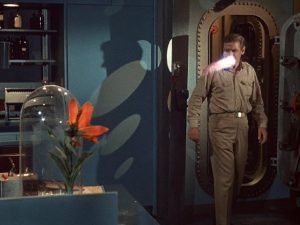 原子力潜水艦シービュー号の”Terror”を観ました。久し振りにWelch以外の脚本。遠い銀河系からやってきたエイリアンが、蘭の花の形をしていて、そこから発せられた光線で人間に乗り移り、シービュー号の原子力エンジンの放射線を使って増殖し、地球を乗っ取ろうという話です。ネルソン提督は一度エイリアンに乗り移られ、その後一回解放されましたが、再度乗り移らることを予期しており、その際は自分を殺せ、とクレーン艦長に命じます。しかし再度エイリアンが乗り移ったネルソン提督はフライングサブに乗り込み、シービュー号をレーザーで攻撃します。クレーン艦長は魚雷攻撃を命じ、フライングサブは吹っ飛び同時にネルソン提督も死んだかと思われました。しかしネルソン提督は生きておりエスケープハッチからシービュー号に再度侵入し、原子力エンジンの放射線を使って仲間を増やします。クレーン艦長は理屈はよく分かりませんが、エイリアンに過剰なエネルギーを与えてオーバーヒートさせて殺す装置を作り、何とかエイリアンを倒す、という話です。シービュー号とフライングサブの対決がなかなかの見物でした。
原子力潜水艦シービュー号の”Terror”を観ました。久し振りにWelch以外の脚本。遠い銀河系からやってきたエイリアンが、蘭の花の形をしていて、そこから発せられた光線で人間に乗り移り、シービュー号の原子力エンジンの放射線を使って増殖し、地球を乗っ取ろうという話です。ネルソン提督は一度エイリアンに乗り移られ、その後一回解放されましたが、再度乗り移らることを予期しており、その際は自分を殺せ、とクレーン艦長に命じます。しかし再度エイリアンが乗り移ったネルソン提督はフライングサブに乗り込み、シービュー号をレーザーで攻撃します。クレーン艦長は魚雷攻撃を命じ、フライングサブは吹っ飛び同時にネルソン提督も死んだかと思われました。しかしネルソン提督は生きておりエスケープハッチからシービュー号に再度侵入し、原子力エンジンの放射線を使って仲間を増やします。クレーン艦長は理屈はよく分かりませんが、エイリアンに過剰なエネルギーを与えてオーバーヒートさせて殺す装置を作り、何とかエイリアンを倒す、という話です。シービュー号とフライングサブの対決がなかなかの見物でした。
NHK杯戦囲碁 山田規三生9段 対 西健伸3段
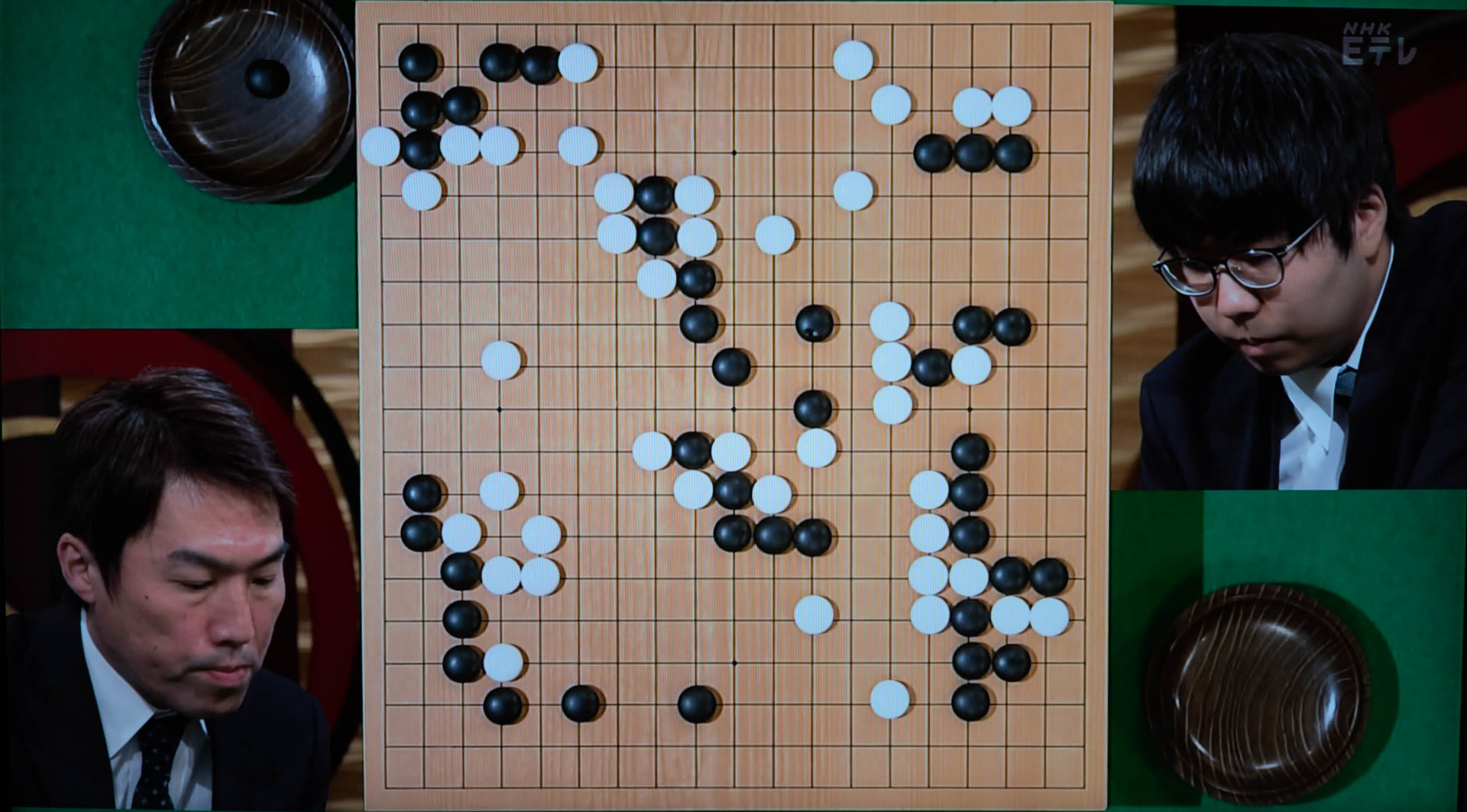 本日のNHK杯戦の囲碁は、黒番が山田規三生9段、白番が西健伸3段の対戦です。西3段は初出場です。黒が比較的腰を落としたじっくりした布石でした。局面が動いたのは、黒が上辺の白の模様を消すのと、右辺の自分の模様の拡大を兼ねて、右辺の石から中央に三間に飛んだ時でした。これに対し白は上辺を受けるのは利かされと見て、黒の三間飛びの間を割って行きました。それに対し黒が中央から下方に一間トビした後、白は右下隅の黒の大ゲイマジマリに付けて行きました。その後の折衝で黒は右辺を通して地にし、白は中央が全部つながって厚くなり、最初に黒が白模様を消しに行った中央の2子が取り残された形になりました。この黒への攻めがどの程度利くかが勝敗の分かれ目になりました。黒は上辺へケイマし白に付けられた時、勢いでハネましたが、すかさず白に切られ、この戦いの成算が無く、やむなく左上隅の三々に転戦しましたが、元々単なる三々打ち込みはあった所なのでちょっとチグハグな打ち方でした。その後も白は中央の黒への攻めを継続し、正しく打てば黒の一部をもぎ取ることが出来たようですが、黒は結局頑張ってすべてをしのぎました。ただ下辺にはそれなりの大きさの白地が出来ました。この収支は黒が地合でリードしており、大ヨセで最大の左辺の二間ビラキに回ることが出来ました。白は劣勢を意識し、その開いた石に付けて行きましたが、黒はその1子を捨てて中央の白を取りに行き、これが決まって黒の中押し勝ちとなりました。
本日のNHK杯戦の囲碁は、黒番が山田規三生9段、白番が西健伸3段の対戦です。西3段は初出場です。黒が比較的腰を落としたじっくりした布石でした。局面が動いたのは、黒が上辺の白の模様を消すのと、右辺の自分の模様の拡大を兼ねて、右辺の石から中央に三間に飛んだ時でした。これに対し白は上辺を受けるのは利かされと見て、黒の三間飛びの間を割って行きました。それに対し黒が中央から下方に一間トビした後、白は右下隅の黒の大ゲイマジマリに付けて行きました。その後の折衝で黒は右辺を通して地にし、白は中央が全部つながって厚くなり、最初に黒が白模様を消しに行った中央の2子が取り残された形になりました。この黒への攻めがどの程度利くかが勝敗の分かれ目になりました。黒は上辺へケイマし白に付けられた時、勢いでハネましたが、すかさず白に切られ、この戦いの成算が無く、やむなく左上隅の三々に転戦しましたが、元々単なる三々打ち込みはあった所なのでちょっとチグハグな打ち方でした。その後も白は中央の黒への攻めを継続し、正しく打てば黒の一部をもぎ取ることが出来たようですが、黒は結局頑張ってすべてをしのぎました。ただ下辺にはそれなりの大きさの白地が出来ました。この収支は黒が地合でリードしており、大ヨセで最大の左辺の二間ビラキに回ることが出来ました。白は劣勢を意識し、その開いた石に付けて行きましたが、黒はその1子を捨てて中央の白を取りに行き、これが決まって黒の中押し勝ちとなりました。
アルフレッド・ヒッチコックの「海外特派員」
 アルフレッド・ヒッチコックの「海外特派員」を観ました。ヒッチコックの映画は初期の作品を除いてほとんど30代前半くらいに観ているのですが、その中で2つ見逃していたのが、この「海外特派員」と「救命艇」でした。「海外特派員」はその頃土曜日の深夜にTVで放映があったんですが、丁度海外出張中で、VTRの予約録画がうまく行かず見逃しました。それでやっと今観たのですが、実に傑作でした!いつものヒッチコック流の「巻き込まれ型犯罪」が1938年の欧州での戦争前夜の雰囲気と合わさって傑作になったと思います。特に、誰がスパイか明らかになって話が終わりに向かっていた時に、主人公とそのスパイとその娘(主人公の恋人)が乗った民間機をドイツの軍艦が砲撃するというサスペンスがあり、民間機は海に落ちてしまいます。生き残った者は結局アメリカの軍艦に救助されますが、アメリカは中立を守ろうとして、船内からの連絡を禁じます。そこで主人公が使った手がありがちですが、なかなか面白いアイデアでした。
アルフレッド・ヒッチコックの「海外特派員」を観ました。ヒッチコックの映画は初期の作品を除いてほとんど30代前半くらいに観ているのですが、その中で2つ見逃していたのが、この「海外特派員」と「救命艇」でした。「海外特派員」はその頃土曜日の深夜にTVで放映があったんですが、丁度海外出張中で、VTRの予約録画がうまく行かず見逃しました。それでやっと今観たのですが、実に傑作でした!いつものヒッチコック流の「巻き込まれ型犯罪」が1938年の欧州での戦争前夜の雰囲気と合わさって傑作になったと思います。特に、誰がスパイか明らかになって話が終わりに向かっていた時に、主人公とそのスパイとその娘(主人公の恋人)が乗った民間機をドイツの軍艦が砲撃するというサスペンスがあり、民間機は海に落ちてしまいます。生き残った者は結局アメリカの軍艦に救助されますが、アメリカは中立を守ろうとして、船内からの連絡を禁じます。そこで主人公が使った手がありがちですが、なかなか面白いアイデアでした。
最後はその新聞記者がドイツ軍からまさに爆撃されているロンドンの現場から生中継でアメリカ国民に対し戦争へ参加することを呼びかける、というドラマチックなシーンで終わっています。この映画が最初に公開されたのは1940年のアメリカでであり、その時点ではまだアメリカは参戦していません。それを考えると最後のシーンはイギリス人ヒッチコックんの本音かもしれません。
「救命艇」もAmazonから取り寄せ中です。
Favorite teacher
The following essay is what I wrote as an writing assignment for an English school AEON:
Topic: Favorite teacher
Style: Casual
I still remember the principal of my high school well. His name was Maurice Picard, and he was also called Brother Horace. He was both the third and sixth principal of St. La Salle High School in Kagoshima. His tenure as the sixth principal was from 1975 to 1982. I was in the school from 1977 to 1980. Very sadly, he died in 1982 from cancer at just 61.
He was a Canadian, and was silent, gentle, and decent. His belief of God was true and firm. When an important ceremony was going to be done at the school, he always said to us that he would pray for good weather to God, and it was always realized! We called it a miracle of Brother Horace.
Since he was the principal of the school, he just took part in the lesson of “Bible History”. It was not at all a forced religious lesson, but he just tried to give us some basic knowledge of the bible. When he checked the attendance of the students at the beginning of the lesson, he called the names of the students including both first and family names with 100% accuracy. Some given names are difficult to read even for us Japanese, but he was memorizing all names of 1,200 students both at the junior high school and the high school. In the lesson, he taught us many Christmas carols that I still remember well. (One funny thing was that he pronounced “Hark the herald” as “Ark the (ði) Erald” because he was from Quebec in Canada where people speak French).
My passed mother was shy and she scarcely opened up with someone whom she met for the first time. But when she first met Brother Horace, she soon came out of her shell and became a big fan of Brother Horace.
I put a photo of my certificate of graduation from the high school in this document. You can see in the left some English descriptions. Brother Horace wrote them for all 250 graduates’ certificates by himself (they are not printed). It proves his sincerity. Now there is a relief of him placed in the high school campus. We (all La Salle boys) strongly believe that he died earlier because he was so much loved by God.
原子力潜水艦シービュー号の”Rescue”
 原子力潜水艦シービュー号の”Rescue”を観ました。「またも」Welch脚本。あー、もういい加減にして欲しい。ある意味では待望の「潜水艦同士の戦い」なんですが、敵の潜水艦がこの間轟沈されたばかりの”Vulcan”号が何故か復活。登録されていない謎の潜水艦なのに、何故か名前を堂々とボディーに記載しています。通常の潜水艦なら肉眼では見れませんが、シービュー号には観察窓があって、肉眼で見ることが可能です。で、シービュー号の乗組員に敵のスパイがいて、色々妨害工作をやりますが、それがこの回からの新顔のビーチという男で、その裏切り者が何故かいきなりミサイルルームの責任者という重大な任務を任されています。シービュー号のセキュリティーは一体どうなっているのか。
原子力潜水艦シービュー号の”Rescue”を観ました。「またも」Welch脚本。あー、もういい加減にして欲しい。ある意味では待望の「潜水艦同士の戦い」なんですが、敵の潜水艦がこの間轟沈されたばかりの”Vulcan”号が何故か復活。登録されていない謎の潜水艦なのに、何故か名前を堂々とボディーに記載しています。通常の潜水艦なら肉眼では見れませんが、シービュー号には観察窓があって、肉眼で見ることが可能です。で、シービュー号の乗組員に敵のスパイがいて、色々妨害工作をやりますが、それがこの回からの新顔のビーチという男で、その裏切り者が何故かいきなりミサイルルームの責任者という重大な任務を任されています。シービュー号のセキュリティーは一体どうなっているのか。
それから大きな謎であるシービュー号の魚雷発射管の位置ですが、今回後ろから追いかけるバルカン号に対し、1号と3号の魚雷を発射していますから、魚雷発射管は明らかにシービュー号の後方にあります。しかしすぐその後に、敵潜水艦の基地を攻撃するのに2号、4号魚雷を発射しますが、それは写真にあるように前からです。しかしミサイルルームでは明らかに4本の魚雷発射管が上下左右に平行して並んでいて、どう考えてもその内2本が逆の方向に発射されるなんていうのはあり得ないのですが。この辺り、アーウィン・アレンのドラマでの特徴で、おそらく脚本家が共同で使う「シービュー号設定集」みたいなものが存在していないのだと思います。シービュー号のプラモデルなどを見ても、魚雷発射管らしきものはありません。
原子力潜水艦シービュー号の”Time Lock”
 原子力潜水艦シービュー号の”Time Lock”を観ました。またもWelch脚本ですが、この話は割と楽しめました。ただ、シービュー号の話というより、タイム・トンネルの話と言った方が良く、タイム・トンネルの中にも良く似たプロットの話があります。(どっちが先か分かりませんが、放映時期はほぼ同じ頃です。)ある29世紀の男が、その世界では既に戦争は無くなっていますが、アレクサンダー大王やナポレオンなどの古今の有名な軍人をタイムマシンで拉致し、ある機械でその知識を吸い取った後は、彼の命令するがままに動く人形として扱うことをやっています。その中の一人にネルソン提督が選ばれてしまい、シービュー号の中に突然現れたアーウィン・アレンお得意の顔を銀色に塗ったアンドロイドがネルソン提督を拉致します。実は彼の真の目的は戦争の無くなった時代に戦争の知識を集めて、実は彼自身の戦争を起こして世界を征服することであることをネルソン提督が見破ります。ネルソン提督が未来に飛ばされた後、シャーキーも手違いで飛ばされ、そのシャーキーが銃で撃たれて傷つきながら、血でハンカチにメッセージを書いてシービュー号の中の転送装置に送り、それをクレーン艦長が読み、グレネードランチャーを持って未来に乗り込みます。未来人も彼のコレクションも目が弱く光に弱いことをシャーキーに教えられ、クレーン艦長は携帯ライトを使いながら未来人の基地に侵入し、ネルソン提督を救助し、最後に基地を吹っ飛ばします。
原子力潜水艦シービュー号の”Time Lock”を観ました。またもWelch脚本ですが、この話は割と楽しめました。ただ、シービュー号の話というより、タイム・トンネルの話と言った方が良く、タイム・トンネルの中にも良く似たプロットの話があります。(どっちが先か分かりませんが、放映時期はほぼ同じ頃です。)ある29世紀の男が、その世界では既に戦争は無くなっていますが、アレクサンダー大王やナポレオンなどの古今の有名な軍人をタイムマシンで拉致し、ある機械でその知識を吸い取った後は、彼の命令するがままに動く人形として扱うことをやっています。その中の一人にネルソン提督が選ばれてしまい、シービュー号の中に突然現れたアーウィン・アレンお得意の顔を銀色に塗ったアンドロイドがネルソン提督を拉致します。実は彼の真の目的は戦争の無くなった時代に戦争の知識を集めて、実は彼自身の戦争を起こして世界を征服することであることをネルソン提督が見破ります。ネルソン提督が未来に飛ばされた後、シャーキーも手違いで飛ばされ、そのシャーキーが銃で撃たれて傷つきながら、血でハンカチにメッセージを書いてシービュー号の中の転送装置に送り、それをクレーン艦長が読み、グレネードランチャーを持って未来に乗り込みます。未来人も彼のコレクションも目が弱く光に弱いことをシャーキーに教えられ、クレーン艦長は携帯ライトを使いながら未来人の基地に侵入し、ネルソン提督を救助し、最後に基地を吹っ飛ばします。

